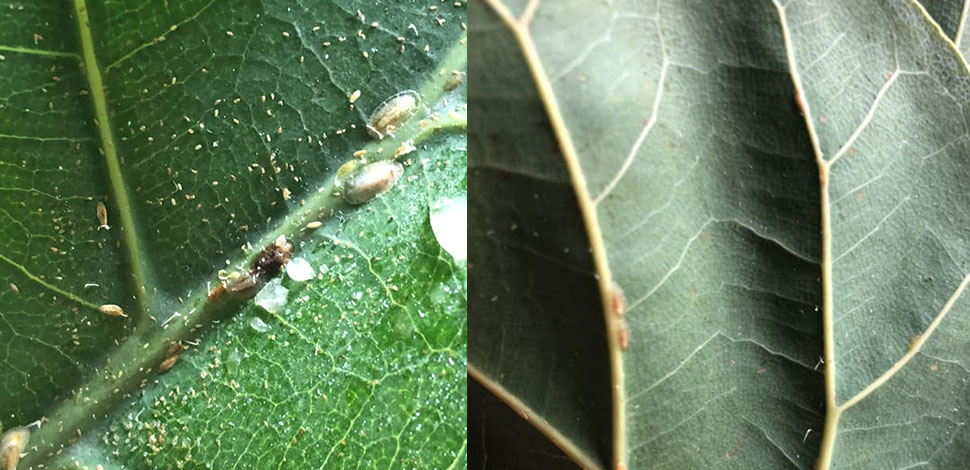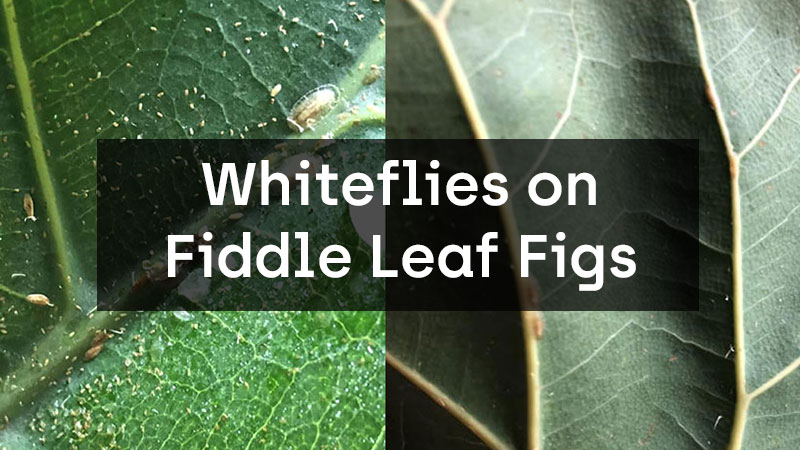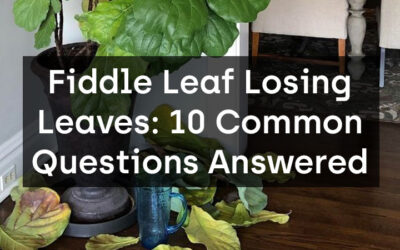Understanding Whiteflies
Whiteflies are small, winged insects that belong to the Aleyrodidae family. They are commonly found in warm and humid environments, making fiddle leaf figs an ideal host. These pests feed on the plant’s sap, causing damage to the leaves and inhibiting photosynthesis. The most common types of whiteflies that affect fiddle leaf figs are the greenhouse whitefly (Trialeurodes vaporariorum) and the silverleaf whitefly (Bemisia tabaci).
Signs of Whitefly Infestation
Detecting a whitefly infestation early is crucial for effective control. Here are some common signs to look out for:
- Yellowing Leaves: Whiteflies extract vital nutrients from the leaves, leading to yellowing and wilting.
- Sticky Residue: The presence of honeydew, a sticky substance secreted by whiteflies, can attract ants and cause fungal growth.
- Tiny White Insects: Whiteflies are small and white, often seen fluttering around the plant when disturbed.
- Black Sooty Mold: The honeydew produced by whiteflies can promote the growth of black sooty mold on the leaves.

Prevention Measures
Preventing whitefly infestations is always preferable to dealing with them after they occur. Here are some preventive measures you can take:
- Isolate New Plants: Before introducing a new fiddle leaf fig to your collection, quarantine it for a few weeks to ensure it’s free from pests.
- Maintain Cleanliness: Regularly clean your plants’ leaves with a damp cloth to remove dust and potential whitefly eggs.
- Avoid Overwatering: Whiteflies thrive in moist environments, so be mindful of your watering routine and ensure proper drainage.
- Provide Adequate Airflow: Whiteflies prefer still air, so placing a fan near your fiddle leaf fig can help deter them.
- Monitor Nearby Plants: Keep an eye on other plants in close proximity to your fiddle leaf fig, as whiteflies can easily spread.
Natural Remedies for Whiteflies
If you prefer a more natural approach to pest control, several remedies can help deter and eliminate whiteflies:
- Neem Oil: Neem oil is an organic insecticide that disrupts the life cycle of whiteflies, preventing them from reproducing.
- Insecticidal Soap: Soaps made specifically for insect control can suffocate whiteflies without harming your plant.
- Yellow Sticky Traps: Placing yellow sticky traps near your fiddle leaf fig can attract and catch adult whiteflies.
- Beneficial Insects: Introducing natural predators like ladybugs or lacewings can help control whitefly populations.
Chemical Control Options
In severe infestations, you may need to resort to chemical control methods. However, exercise caution and follow instructions carefully when using chemical insecticides. Consult a professional if you’re unsure about the appropriate course of action.
Integrated Pest Management (IPM)
Implementing an integrated pest management approach combines various strategies to control whiteflies effectively. This approach may include the use of natural remedies, cultural practices, and, if necessary, targeted chemical treatments. By adopting an IPM approach, you minimize the use of harmful chemicals while maximizing control over whitefly populations.
Pruning and Maintenance
Regular pruning is essential for maintaining the health and appearance of your fiddle leaf fig. When pruning, be sure to remove any infested leaves or branches to prevent the spread of whiteflies. Additionally, proper plant maintenance, such as removing fallen leaves and debris, can help reduce the risk of whitefly infestations.
Enhancing Plant Health
Healthy plants are better equipped to resist and recover from pest attacks. Ensure your fiddle leaf fig receives adequate sunlight, proper watering, and appropriate fertilization. Avoid overfertilizing, as it can make the plant more attractive to whiteflies.
Monitoring and Regular Inspections
To stay proactive in whitefly control, it’s crucial to monitor your fiddle leaf fig regularly. Inspect the leaves, stems, and undersides of the leaves for any signs of whiteflies or other pests. Early detection allows for swift action and minimizes potential damage.
Conclusion
Whiteflies can be a challenge for fiddle leaf fig enthusiasts, but with the right knowledge and strategies, you can successfully control and manage these pests. Remember to take preventive measures, use natural remedies whenever possible, and employ integrated pest management techniques to keep your fiddle leaf fig healthy and thriving.
FAQs
1. Are whiteflies harmful to humans?
Whiteflies do not pose a direct threat to humans, but they can cause damage to plants, including fiddle leaf figs.
2. Can I use chemical insecticides on my fiddle leaf fig?
Chemical control should be a last resort and should be used with caution. Consult a professional or follow the instructions carefully if using chemical insecticides.
3. Do whiteflies only affect fiddle leaf figs?
While whiteflies are commonly found on fiddle leaf figs, they can infest a variety of other plants as well.
4. Can I prevent whiteflies by keeping my plants indoors?
While indoor plants are generally less prone to whitefly infestations, it’s still important to implement preventive measures and regularly inspect your plants.
5. Can whiteflies kill a fiddle leaf fig?
Severe whitefly infestations can weaken a fiddle leaf fig and potentially lead to its death. Prompt action and proper care are essential to prevent such outcomes.







0 Comments